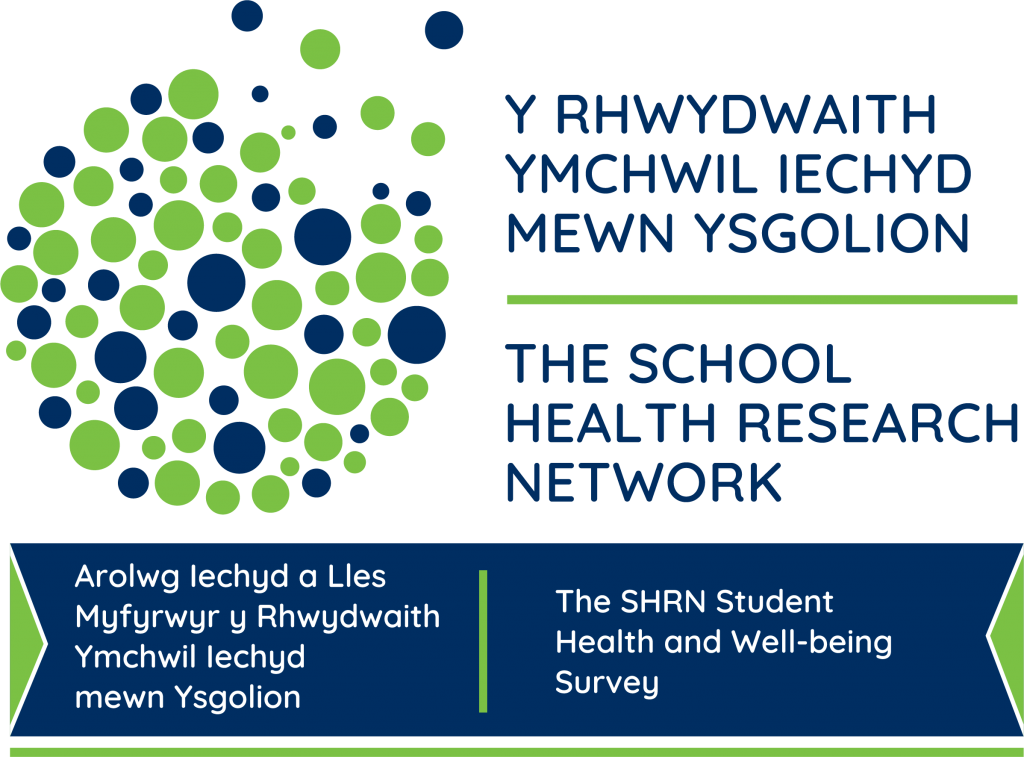
In an era where young people’s mental health and physical well-being are frequently in the spotlight, the School Health Research Network (SHRN) stands at the forefront in providing schools and policymakers with robust, actionable data to support the implementation of evidence-informed solutions.
In This Blog, Dr. Nick Page, a Research Fellow at DECIPHer, and Senior Analyst for SHRN, gives an insight into the data we collect and how it’s helping to shape a healthier future for the next generation.
Since 2013, The SHRN Student Health and Well-being (SHW) survey in secondary schools has been a cornerstone in understanding and enhancing the health and well-being of adolescents in Wales.
Administered biennially to a large national sample of 11-16-year-olds, the SHW survey covers a range of topics including mental health and well-being, physical activity and nutrition, substance use, sexual health, and social relationships.
Our work has been profoundly significant in helping to establish and embed a national model for data collection and knowledge mobilisation with schools that provides evidence crucial to informing both public health and school health policies, programmes, and interventions aimed at improving the lives of children and young people. School participation in the SHW survey regularly exceeds 90% of maintained secondary schools, with student response rates steadily increasing from 65% in 2017 to 75% by 2023. This equates to over 100,000 11-16-year-olds participating in the survey each round.
Our most recent survey round saw the highest participation to date, with 129,761 11-16-year-olds from 201 schools taking part. This large national sample ensures that the diverse experiences and needs of a wide range of students are represented (including gender and ethnic minorities, young carers, and care-experienced young people), promoting health equity and providing valuable opportunities to better understand health behaviours among minoritized groups.
Data from the SHW survey supports evidence generation in many forms, including:
- Epidemiological research
- Policy monitoring and evaluation
For example, our data has recently helped to examine trends in young people’s emotional problems in Wales in the years prior to the COVID-19 pandemic, finding a substantial increase between 2013 and 2019 that could not be explained by changes in bullying or friendships. SHW data has also been used to evaluate the impacts on youth vaping following the introduction of EU regulation, while survey responses from consenting students have been successfully linked with routine health records to examine associations between bullying and self-harm.
Every four years, the SHW survey embeds questions from the international Health Behaviour in School-aged Children (HBSC) study – a long-running study of adolescent health supported by the World Health Organisation that began in the 1980s – enabling cross-comparisons with data from 50 countries across Europe and North America.
In a recently published study, data from 35 HBSC countries, including Wales, showed that young people’s physical (e.g. headaches, stomach aches) and mental (e.g. anxiety, irritability) health complaints were substantially higher than expected following the pandemic, based on previous trends.
To increase the visibility of the SHW data within the academic research community, we have recently published a freely accessible data resource profile of the SHW survey within the International Journal of Epidemiology. The purpose of this data resource profile is to provide information to enable researchers to understand the scope of the SHW data and how to access and make best use of it.

In 2024, SHRN took a significant step forward by expanding the SHW survey to include primary schools in Wales. This expansion has allowed us to collect invaluable data on the health and well-being of younger children aged 7-11 for the first time. The initiative aims to provide early insights into the health habits and challenges faced by children, facilitating earlier intervention and support within the educational system. This new dataset complements our existing research and offers a more comprehensive view of youth health across different age groups.
Looking ahead, we’re excited to build on our existing data infrastructure through a further round of data collection in 2025 which will allow us to continue to generate high-quality research evidence to support school health improvement in Wales and beyond.
Share Your Academic Insights: Have you utilised SHRN data in your academic work? Share your findings and insights in the comments below. Your contributions can help shape future health initiatives and interventions, fostering a healthier future for children and young people.
Help spread the word! Share this post with your friends and colleagues to raise awareness about the health and well-being of children and young people and the value of SHRN data.
About the Author
I am a Research Fellow within The School Health Research Network (SHRN) based at the Centre for Development, Evaluation, Complexity and Implementation in Public Health Improvement (DECIPHer), Cardiff University. As programme lead for analysis and outputs in SHRN, my research focuses on advancing adolescent population health through secondary analyses of quantitative data.
My research has explored changes over time in youth smoking and cannabis use, investigated the short-term effects of introducing e-cigarette regulations on youth vaping, and examined potential biases when combining routine data linkage with national surveys of secondary school children. My aim is to generate high-quality evidence that informs public health policies and interventions, ultimately contributing to healthier communities.



